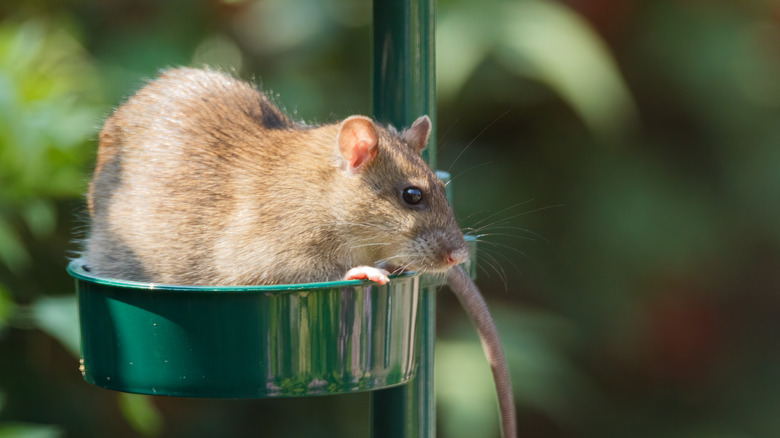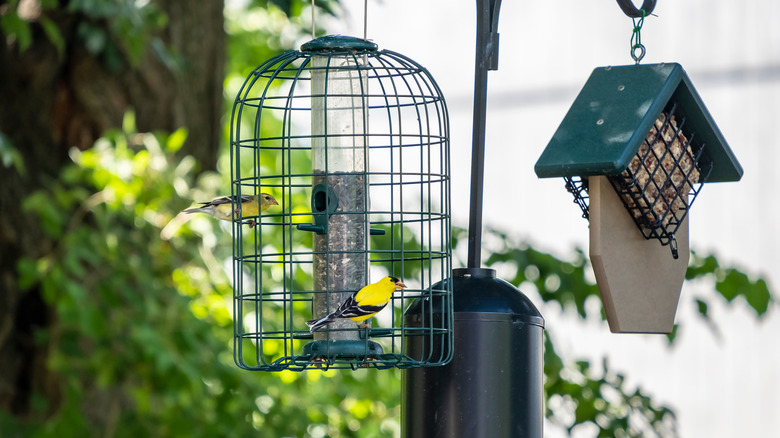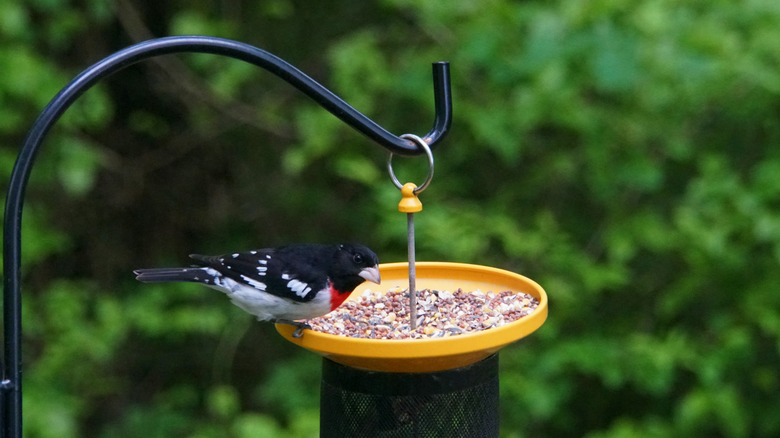This Is Why Rats Won't Leave Your Bird Feeder Alone
Rats are generally seen as pests because they are a very invasive species. However, it's important to remember that, just like any animal, there's a logic to their behavior; they don't do things simply to be annoying. Once you understand why they are always getting into your bird feeder, you can take steps to humanely keep rats away.
The appeal of a bird feeder for rats is simple: food. Rats aren't thinking about your intended purpose for the feeder; they just want to eat, and they've found what looks like an endless supply of free sustenance. They are smart and agile, so it's not hard for them to get into bird feeders.
The good news is that, by understanding how and why rats access your bird feeder, you can remove that access or make it simply unappealing to them. With a few small changes, you can keep those rats out of your birdseed.
How to keep rats from getting in a bird feeder
To keep rats away from your bird feeder, you can update your existing feeder without needing to buy a new one. A squirrel baffle, though traditionally used for squirrels, is a barricade that can prevent rats from climbing up to the feeder, too. Some baffles go above the feeder, and some go below it. For even better results, try using both types of baffles.
Consider repositioning your bird feeder as well. If it's brushing up against nearby bushes, for example, even a baffle may not prevent rats from getting in. Additionally, if your house is too close, it can offer climbing opportunities as well as an incentive for rats to find a way inside.
Ensure that bird feeders on poles are difficult to climb. Replace wood or PVC poles with metal ones. If you're ready to replace your bird feeder entirely, consider a weight-sensitive option that will close off access when it detects an animal heavier than a bird.
Making the area less rat friendly
To prevent rats from being attracted to your bird feeder, as well as your home and garden, you can make several related updates in addition to changing the bird feeder design. First, ensure that the areas around the bird feeder are always kept clean. Rats are attracted to spilled seeds on the ground, so if the feeder doesn't have one, install a seed tray to reduce cleanup time.
Next, clear out any nearby hiding spots. Rats prefer cover, so if there are thick bushes, firewood piles, or similar shelter options close to your bird feeder, they'll stay there until it's time to eat. Without shelter nearby, they'll reconsider the risks of visiting your bird feeder.
Lastly, make sure that you store extra bird seed correctly so that rats who can't access a feeder won't simply go there next. Use a container made of metal, glass, or sturdy plastic, so rats won't chew through it. Make sure it has a secure lid with a latch, and keep it closed at all times when you're not using it. With no easy food source, rats will likely leave your bird feeder and the surrounding areas alone.


